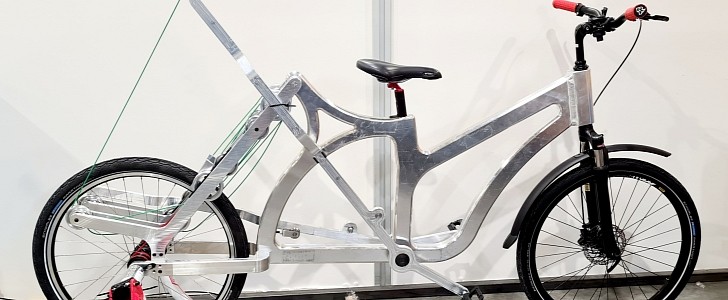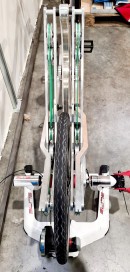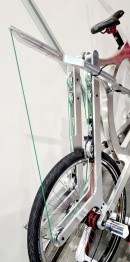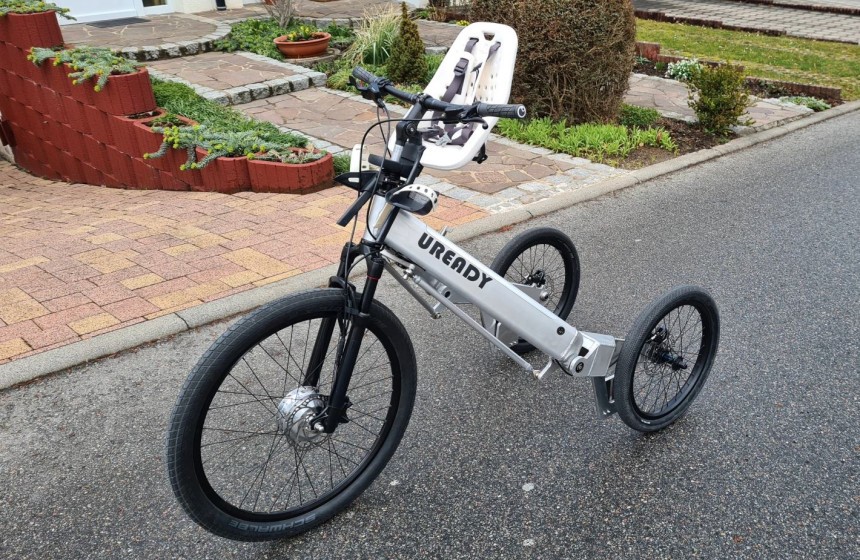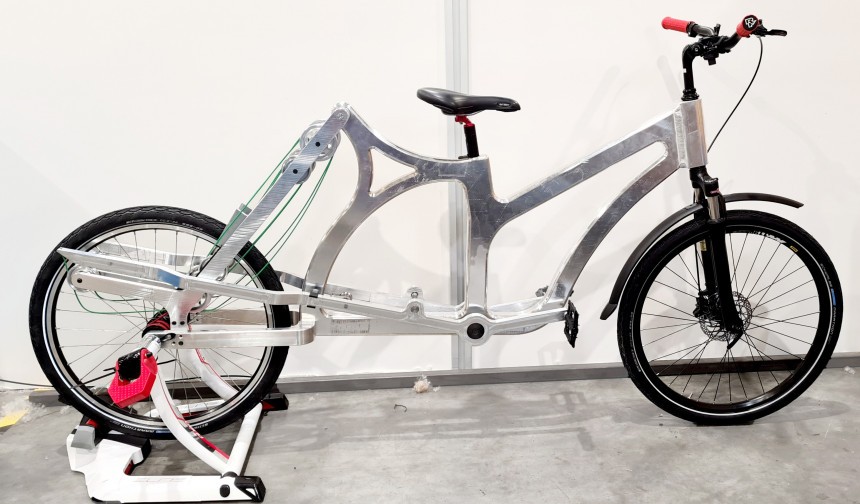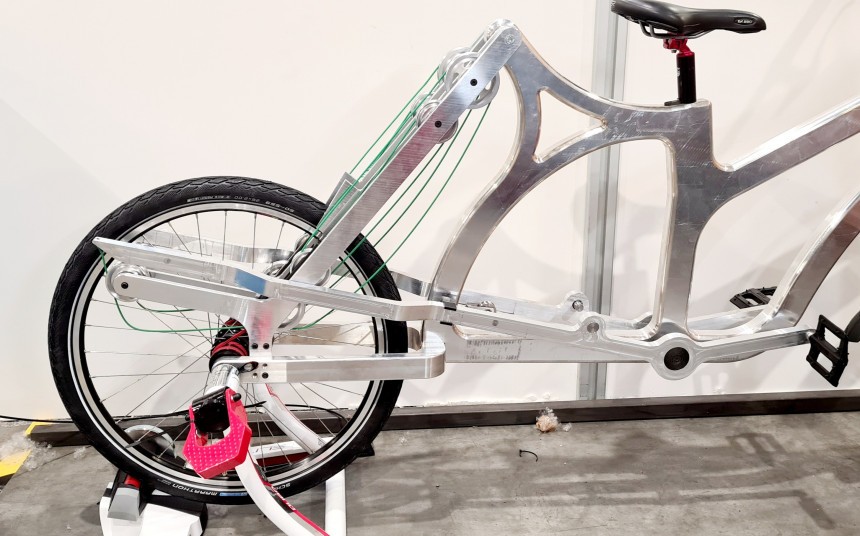You know those ideas that you’ve had for years, and only now is the technology available to make them happen? Well, plenty of automotive manufacturers feel that way. But you know who else feels that way? Designers, scientist, and inventors.
One inventor known to turn his ideas into a reality is the creator of the Uready e-trike, Oguzhan Albayrak. Just to refresh your brain, Albayrak is a competitive athlete with a history in endurance sports and a love for jogging. In time, he turned inventor, worked on and developed the Uready e-trike. This is a vehicle designed to assist joggers and runners in such a way as to reduce the passenger's weight by up to 40%.
Now, Albayrak is at it again. This time he’s bringing back a design that he’s had in mind since 1994, but due to recent breakthroughs, he’s now able to make it happen. What you’re looking at is, for the time being, just a prototype. But this prototype does have patents pending so be careful what you do in your garage after reading this article.
The prototype you see is known as the Grashüpfer. Stick that into Google, hit the translate button, and you get? Grasshopper. The reason being, the “bicycle” ends up looking a bit like a grasshopper, doesn’t it?
Insect kingdom aside, what makes the design so dang special is that it functions on a pulley and lever system. Whatever flashbacks of medieval torture devices you may have, leave them behind, as this trinket is meant to make your life easier, not harder. How?
Well, what is it that we know about levers and pulleys? Long story short, lever and pulley systems are meant to lessen the amount of energy needed to move or manipulate an object. How? With pages upon pages of engineering. However, the Grashüpfer has both systems working together as one, and in doing so, has been adapted to a bicycle frame.
So, the front half of the Grashüpfer looks nice and normal, up to about the seat post. Nothing out of the ordinary except maybe an eccentric tube design. Once you pass the seat tube, everything you though you ever knew about bikes just goes out the window.
The classic seat stay has been warped into an aluminum structure that could very well belong in a museum. However, it’s here that the drivetrain for the bike is housed. To make things easy to understand, there are two pulley systems, once for each pedal or leg. These pulley systems are known as pulley blocks and can reduce the amount of energy required to move a load by up to times. Yes, this means that you can move an object with four times less energy.
But there’s a catch. In doing so, the pulley rope, or in this case, some very colorful cables, need to travel four times their normal distance. Meaning there needs to be something to compensate for this. Cue the funky looking cranks. Because the ends of the cables are lifted high once you push down on the pedal, the compensation for that distance mentioned earlier is now solved.
Once you’ve pushed the pedal down, and the cable is lifted to its highest point, the pulleys reset to their initial position via a return spring and the cycle begins again. Since another component links this motion to the rear hub, energy is exerted onto the rear wheel and away you go.
Why create a bicycle that is meant to function like this? Well, it’s because of that whole four times less energy thing. With it, Albayrak claims you can do a clean 60 km (37 mi) while riding the bike, and still have the energy to go about your day.
As it stands, this bike is the first of its kind and may be the only one. If all goes well during the 2021 Eurobike trade show, you just might be able to buy the Grashüpfer or something very similar in the coming years. If not, you just might see this exact mechanism on vehicles like pedal boats, hand cycles, and the likes. Why not on a rowboat?
Everything else, like handlebars, and even brakes, are all found at the front of the bike. Oh yeah, there’s even a suspension in place to help reduce some of the bumps in your ride. Shifting components? Not quite yet, but Albayrak seems to have that in the plans. At least that’s what I understood from our e-mail discussion.
When most people hear the word bicycle, they’ll quickly imagine a two-wheeled vehicle with pedals, handlebars, a drivetrain, and possibly brakes. But, as technology advances, the idea of what makes a bicycle a bicycle seems to be getting wilder with each passing moment.
Now, Albayrak is at it again. This time he’s bringing back a design that he’s had in mind since 1994, but due to recent breakthroughs, he’s now able to make it happen. What you’re looking at is, for the time being, just a prototype. But this prototype does have patents pending so be careful what you do in your garage after reading this article.
The prototype you see is known as the Grashüpfer. Stick that into Google, hit the translate button, and you get? Grasshopper. The reason being, the “bicycle” ends up looking a bit like a grasshopper, doesn’t it?
Well, what is it that we know about levers and pulleys? Long story short, lever and pulley systems are meant to lessen the amount of energy needed to move or manipulate an object. How? With pages upon pages of engineering. However, the Grashüpfer has both systems working together as one, and in doing so, has been adapted to a bicycle frame.
So, the front half of the Grashüpfer looks nice and normal, up to about the seat post. Nothing out of the ordinary except maybe an eccentric tube design. Once you pass the seat tube, everything you though you ever knew about bikes just goes out the window.
The classic seat stay has been warped into an aluminum structure that could very well belong in a museum. However, it’s here that the drivetrain for the bike is housed. To make things easy to understand, there are two pulley systems, once for each pedal or leg. These pulley systems are known as pulley blocks and can reduce the amount of energy required to move a load by up to times. Yes, this means that you can move an object with four times less energy.
Once you’ve pushed the pedal down, and the cable is lifted to its highest point, the pulleys reset to their initial position via a return spring and the cycle begins again. Since another component links this motion to the rear hub, energy is exerted onto the rear wheel and away you go.
Why create a bicycle that is meant to function like this? Well, it’s because of that whole four times less energy thing. With it, Albayrak claims you can do a clean 60 km (37 mi) while riding the bike, and still have the energy to go about your day.
Everything else, like handlebars, and even brakes, are all found at the front of the bike. Oh yeah, there’s even a suspension in place to help reduce some of the bumps in your ride. Shifting components? Not quite yet, but Albayrak seems to have that in the plans. At least that’s what I understood from our e-mail discussion.
When most people hear the word bicycle, they’ll quickly imagine a two-wheeled vehicle with pedals, handlebars, a drivetrain, and possibly brakes. But, as technology advances, the idea of what makes a bicycle a bicycle seems to be getting wilder with each passing moment.
